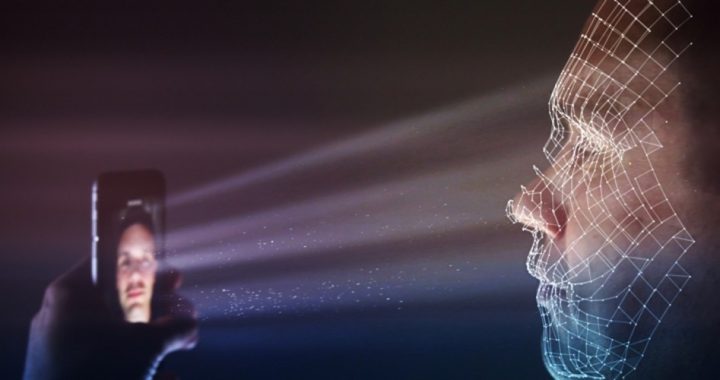
In light of the frightening potential for abuse of power present in facial-recognition technology, an executive in that industry has vowed never again to sell his equipment to law enforcement, and others have made similar promises to prevent their products from being used to threaten the liberties of the people.
As reported by NBC News:
“Time is winding down but it’s not too late for someone to take a stand and keep this from happening,” said Brian Brackeen, the CEO of the facial recognition firm Kairos, who wants tech firms to join him in keeping the technology out of law enforcement’s hands.
Unfortunately, though not unexpectedly, NBC then goes on to point out that Brackeen “is black” and that facial recognition systems “struggle to distinguish faces of people with dark skin.”
That is not the issue, unless you’re interested in stirring up racial discord.
As Brackeen himself wrote in an article published by TechCrunch in June, “And clearly, facial recognition-powered government surveillance is an extraordinary invasion of the privacy of all citizens — and a slippery slope to losing control of our identities altogether.”
That is the real problem with this technology. Facial-recognition software is now so complex and so sophisticated — and growing more so every day — that the increasingly federalized law-enforcement agencies in this country possess the power to identify and track millions of Americans neither suspected or accused of any crime, as required by the plain letter of the Constitution.
While some would point to the successful deployment of these devices in the identification and apprehension of those participating in violent protests, one could ask whether that same technology might not be used in another context to identify and apprehend citizens engaged in any sort of protest, one such as the Boston Tea Party, for example.
Despite its contribution to divisive racial collectivism, the NBC News report does accurately set out the scary applications of facial-recognition technology in everyday life:
Facial recognition — using algorithms to match someone’s facial characteristics across photos and video — is already commonplace in many aspects of contemporary life. It is used to tag people on Facebook, to unlock iPhones and PlayStations and to focus cellphone photographs, and soon will be used to admit fans to Major League Baseball games. Most adult Americans are already in a facial recognition database of some kind, the result of governments formatting driver’s license and passport photos for such use, according to the Center on Privacy & Technology at Georgetown University Law Center.
NBC then goes on to describe how facial-recognition technology was used in Maryland to identify the man accused of carrying out the massacre at the Capitol Gazette newspaper.
The New American reported on this, and included information others wouldn’t:
It seems that the database indeed functioned as anticipated in the identification of a suspected murderer. The issue, of course, is whether the technology could be used to identify those not suspected of any crime other than being someone the government wants to watch and track.
Furthermore, the provenance of the pictures in the MIRS database should be disturbing to Marylanders and any other American worried about the growth of the surveillance state and the increasing collection of images of innocent people without their consent or even their knowledge.
In its report, the Baltimore Sun reported that some 6,000 to 7,000 law-enforcement agencies have access to the MIRS database and that during one week it was accessed more than 175 times. That frequency of use and that broad a base of access has led to abuse, according to privacy advocates.
Anyone at any point on the political spectrum would surely see the potential for abuse of this technology, particularly when those whose images are uploaded to the database against which facial recognition images are compared have no idea that they are participating in such a program.
Regarding the increasing deployment of “real-time” facial-recognition technology, NBC News reports that “U.S. security agencies are testing the technology in some airports and border crossings. And now systems are being designed for use by local police.”
As The New American has reported on dozens of times, local police, through the billions of dollars in grants offered them by the Department of Homeland Security in exchange for the installation of “Fusion Centers” within their jurisdiction, are becoming nothing more than outposts of the federal intelligence apparatus.
There is no way that police could afford such expensive equipment were it not for the money provided by the feds. This money, in so many cases, leads to manipulation, as the agreements signed by local law enforcement to develop a Fusion Center include granting control of the agency to Homeland Security.
In order to achieve their ultimate aim, the globalists demand that DHS or some other federal agency take control of the personnel decisions currently made by local police chiefs and county sheriffs. “As the threat grows more localized,” a DHS report claims, “the federal government’s need to train, and even staff, local agencies, such as major city police departments, will grow.” Put another way: The federal government will run your local police department and sheriff’s office.
So, while many may see no harm in allowing their local police forces to possess these cutting-edge technological tools for fighting crime, they would agree, hopefully, that there is much harm and a clear and present danger to liberty when control of such power will not be in the hands of the local police, but in the hands of Homeland Security and other federal intelligence agencies.
Image: Spencer_Whalen via iStock / Getty Images Plus



